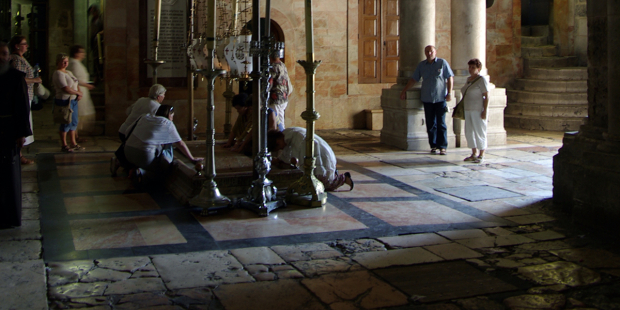Millions have walked site of Jesus’ crucifixion and resurrection over the centuries.
Over the centuries, millions of people from all over the world have walked on these stones, and architects have just begun “mapping” the stones to determine their state of disrepair.
“I’m drawing the stones, stone by stone, which will then be transported from this iPad to the computer. From there we will get a technical drawing that will be used, together with the information gathered by the restorers, the geologists and those who are part of our team,” said Andrea Caligaris, of Caligaris Architects, in a video produced by the Custody of the Holy Land, the Franciscan organization charged with oversight of the holy places in the Middle East. “We will be able to understand the state of conservation, the mapping of the deterioration, the surfaces, in order to formulate a hypothesis of a restoration project.”
Leaders of the Christian communities that run Holy Sepulchre announced on May 27, 2019, the signing of an agreement for the restoration and rehabilitation of the foundations of the tomb and the floor of the entire church.
The project is being carried out by the Turin, Italy-based Foundation Centre for the Conservation and Restoration of Cultural Heritage La Venaria Reale and the Department of Antiquity Sciences of the University La Sapienza in Rome.
Teams are now evaluating the “degradation that every stone and every slab on this floor has suffered,” explained Osama Hamdan, an architect from Al Quds University in Jerusalem. “But at the same time, we are also studying the type of material, the origin, where the material which made the floor of the Basilica comes from.”
Caligaris spoke of the emotion he feels while doing the work “because we are in this place, the fulcrum of Christianity.”
“It is very beautiful and interesting because there are so many layers of this floor that have been added over the centuries, as a result of the various interventions and occupations that took place,” Caligaris said. “So, it is also very interesting to discover and see the various differences and how all these elements have been intertwined, a great historical testimony and certainly a great pleasure.”
Source: John Burger
Source: www.aleteia.org






